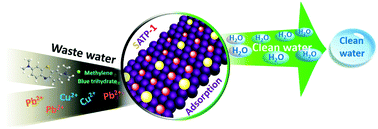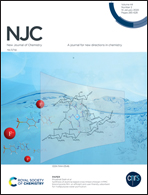A simple construction strategy for fabrication of sulfur-doped silicate materials from attapulgite†
Abstract
In this work, using the principle of partial OH− being replaced by S2− and continuously oxidized to SO42− in a hydrothermal process, a simple, economic and effective one step process in which sodium sulfide is used as a modifier and a source of sulfate doping has been proposed to fabricate sulfur-doped silicate materials (SATP), an attapulgite (ATP) derivative. Various characterization methods were used to investigate the structure of SATP, and the results show that a high concentration of sodium sulfide treatment solution in the hydrothermal process causes changes in the SATP structure, such as layered or blocky structures resulting from the free self-aggregation, as well as the increase in the degree of sulfur doping, namely the content of sulfate in the SATP. Primarily, part of the alumina in the ATP becomes aluminum sulfate and aluminosilicate during the process of ATP being converted to the SATP. Besides, the adsorption and desorption performances of the SATP were investigated toward methylene blue (MB), Cu2+ and Pb2+. Due to its unique structure and existence of sulfate, SATP-1 exhibits a remarkably high adsorption and desorption performance, which indicates that SATP-1 has great potential as a high performance adsorbent in dye or heavy metal wastewater treatment in the near future.



 Please wait while we load your content...
Please wait while we load your content...